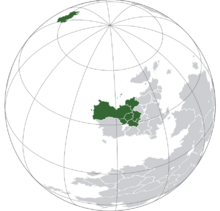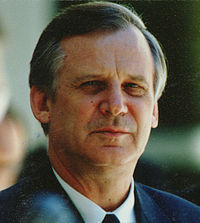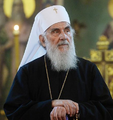Samorspi: Difference between revisions
Lannistter (talk | contribs) m (Salikhia) |
|||
| (51 intermediate revisions by 11 users not shown) | |||
| Line 7: | Line 7: | ||
| {{Infobox |subbox=yes |bodystyle=font-size:77%;font-weight:normal; | | {{Infobox |subbox=yes |bodystyle=font-size:77%;font-weight:normal; | ||
| rowclass1 = mergedrow | label1 = {{wp|Polish language|Miersan}}: | data1 = ''Semastopolska Organizacja Współpracy'' | | rowclass1 = mergedrow | label1 = {{wp|Polish language|Miersan}}: | data1 = ''Semastopolska Organizacja Współpracy'' | ||
| rowclass2 = mergedrow | label2 = {{wp|Croatian language| | | rowclass2 = mergedrow | label2 = {{wp|Croatian language|Bistravian}}: | data2 = ''Organizacija za suradnju u Samistopolu'' | ||
| rowclass3 = mergedrow | label3 = {{wp|Rusyn language| | | rowclass3 = mergedrow | label3 = {{wp|Rusyn language|Soravian}}: | data3 = ''Самістопольська організація співробітництва'' | ||
| rowclass4 = mergedrow | label4 = {{wp|Slovak language|Seniak}}: | data4 = ''Organizácia pre spoluprácu Samistopolu'' | | rowclass4 = mergedrow | label4 = {{wp|Slovak language|Seniak}}: | data4 = ''Organizácia pre spoluprácu Samistopolu'' | ||
| rowclass5 = mergedrow | label5 = {{wp|Belarusian language| | | rowclass5 = mergedrow | label5 = {{wp|Belarusian language|Laudanian}}: | data5 = ''Арганізацыя Супрацоўніцтва Самістапаля'' | ||
| rowclass6 = mergedrow | label6 = {{wp|Georgian language| | | rowclass6 = mergedrow | label6 = {{wp|Bulgarian language|Tengarian}}: | data6 = ''Организация за сътрудничество в Самистопол'' | ||
| | | rowclass7 = mergedrow | label7 = {{wp|Georgian language|Salikh}}: | data7 = ''სამისტოპოლის თანამშრომლობის ორგანიზაცია'' | ||
| rowclass8 = mergedrow | label8 = {{wp|Finnish language|Vichod}}: | data8 = ''Samistopol-yhteistyöjärjestö'' | |||
}} | }} | ||
}} | }} | ||
| Line 29: | Line 30: | ||
|text_symbol_type = <!-- for other types of text symbol --> | |text_symbol_type = <!-- for other types of text symbol --> | ||
|text_symbol = <!-- e.g. ''[hymn name]'' --> | |text_symbol = <!-- e.g. ''[hymn name]'' --> | ||
|image_map = Samorspi globe | |image_map = Samorspi globe 2020.png | ||
|loctext = <!--text description of location of organization--> | |loctext = <!--text description of location of organization--> | ||
|alt_map = <!-- alt text for map image --> | |alt_map = <!-- alt text for map image --> | ||
| Line 35: | Line 36: | ||
|map_caption = | |map_caption = | ||
|org_type = {{wp|Economic union}} and {{wp|military alliance}} | |org_type = {{wp|Economic union}} and {{wp|military alliance}} | ||
|capital = [[ | |capital = [[Seiresk]], [[Soravia]] | ||
|membership_type = Member states | |membership_type = Member states | ||
|membership = {{collapsible list | |membership = {{collapsible list | ||
|titlestyle = background:transparent;text-align:left;font-weight:normal; | |titlestyle = background:transparent;text-align:left;font-weight:normal; | ||
|title = | |title = 7 states | ||
|{{unbulleted list| | |{{unbulleted list| | ||
|{{flag| | |{{flag|Bistravia}} | ||
|{{flag| | |{{flag|Soravia}} | ||
|{{flagicon image|Flag of | |{{flagicon image|Flag of Laudania.png}} [[Laudania]] | ||
|{{flagicon image| | |{{flagicon image|TengariaFlag.png}} [[Tengaria]] | ||
|{{ | |{{flagicon image|SKHFlag4.png}} [[Salikhia]] | ||
|{{flagicon image|Kantemoshan&AmbrazkanUnionFlag1.png}} [[Kantemosha]] | |||
|{{flag|West Miersa}} | |{{flag|West Miersa}} | ||
}} | }} | ||
| Line 54: | Line 56: | ||
|official_languages = {{collapsible list | |official_languages = {{collapsible list | ||
|titlestyle = background:transparent;text-align:left;font-weight:normal; | |titlestyle = background:transparent;text-align:left;font-weight:normal; | ||
|title = | |title = 8 languages | ||
|{{hlist |{{wp|Polish language|Miersan}}|{{wp|Croatian language| | |{{hlist |{{wp|Polish language|Miersan}}|{{wp|Croatian language|Bistravian}}|{{wp|Rusyn language|Soravian}}|{{wp|Slovak language|Seniak}}|{{wp|Belarusian language|Laudanian}}|{{wp|Bulgarian language|Tengarian}}|{{wp|Georgian language|Vedmedi}}|{{wp|Finnish language|Vichod}}}}}} | ||
|leader_title1 = SCO Executive Chairperson | |leader_title1 = SCO Executive Chairperson | ||
|leader_name1 = {{flagicon| | |leader_name1 = {{flagicon|West Miersa}} [[West Miersa|Daria Mileska]] | ||
|leader_title2 = TMA Executive Secretary | |leader_title2 = TMA Executive Secretary | ||
|leader_name2 = {{flagicon| | |leader_name2 = {{flagicon|Soravia}} [[Artem Kononenko]] | ||
|leader_title14 = | |leader_title14 = | ||
|leader_name14 = | |leader_name14 = | ||
| Line 67: | Line 69: | ||
|established_event2 = Treaty of Samistopol | |established_event2 = Treaty of Samistopol | ||
|established_date2 = 17 June 1989 | |established_date2 = 17 June 1989 | ||
| | |established_event3 = Tsivebi Military Agreement | ||
| | |established_date3 = 28 August 1997 | ||
|established_event4 = Last polity admitted | |||
|established_date4 = 1 June 2020 ([[Lemovicia]]) | |||
|official_website = | |official_website = | ||
|area_km2 = 3,994,386 | |area_km2 = 3,994,386 | ||
| Line 104: | Line 108: | ||
}} | }} | ||
The '''Samistopol Cooperation Organisation''', often abbreviated to the '''SCO''' or '''Samorspi''' from its | The '''Samistopol Cooperation Organisation''', often abbreviated to the '''SCO''' or '''Samorspi''' from its Soravian translation, is a political, economic and military alliance as well as a regional intergovernmental organisation consisting of the six modern states of the Empire of Soravia, as well as the southern Euclean state of [[Tengaria]]. Most member states of Samorspi are closely aligned to Soravia either economically, politically or militarily, with the bloc aiming mainly to promote economic and military collaboration and cooperation between its member states. As of 2018, Samorspi has an estimated population of over 165 million and a GDP of over $4 trillion, around 70% of which is made up by [[Soravia]]. Samorspi has been described as the main competition to the [[Euclean Community]] in [[Euclea]]. | ||
Samorspi was established originally in 1983 with the signing of the Treaty of | Samorspi was established originally in 1983 with the signing of the Treaty of Myensk in [[Miensk]], [[Bistravia]], between delegations from Soravia, Bistravia, Vedmed, West Miersa and the KA to promote cooperation between the five states. With large economic boosts seen in all countries due to intranational investment and economic cooperation, Samorspi was consolidated into an intergovernmental organisation by the Treaty of Samistopol, signed in 1989. Samorspi expanded in 1984 with the accession of [[Radushia]] to the organisation. The [[Tsivebi Military Agreement]] was signed in 1997 to established a military alliance between Samorspi member states, however members are permitted to opt out of the TMA, which [[Kantemosha]] exercised in 1998. Piraea withdrew from the organisation prior to beginning the EC accession process in 2007. | ||
While smaller than the [[Euclean Community]], Samorspi still exerts a powerful influential role on the international geopolitical stage, especially through [[ | While smaller than the [[Euclean Community]], Samorspi still exerts a powerful influential role on the international geopolitical stage, especially through [[Soravia]] in the role of defense. Samorspi has central leadership through the SCO Executive Chairperson, currently West Miersan diplomat [[West Miersa|Daria Mileska]], and the TMA Executive Secretary, currently Soravian military officer [[Artem Koneneko]]. | ||
== History == | == History == | ||
=== Treaty of Maljubav === | === Treaty of Maljubav === | ||
Following the [[Sostava War]], much of the post-Soravia states, as well as Soravia itself, had entered into economic recessions caused almost entirely from the fallout of the war. States such as [[Lemovicia]] were gripped by [[Lemovician Civil War|subsequent internal conflict]], but many states were left in recessions, with their economic insecurity too great to warrant any significant investment or financial bailout from the [[Euclean Community]] in the east. As the Sostava War came to an effective end outside of Zalykia in 1982, talks were made on the subject of re-integration between Soravia's ex-states to encourage free trade and collective economic rebuild. [[Sava Tokar]] and his successor [[Vasil Bodnar]] were notable supporters for the idea of reintegration following the war, and wished to further ties with the new states. | |||
Talks were held between various leaders and representatives of five states {{ndash}} [[Soravia]], [[Kantemosha]], [[Salikhia]], [[West Miersa]] and [[Bistravia]]{{snd}} who unanimously banded together for the ''de facto'' creation of Samorspi as an alliance of states outlined in the Treaty of Maljubav on October 20, 1983. [[Tengaria]] and [[Radushia]] joined the organisation a year later in 1984. | |||
=== Treaty of Samistopol === | === Treaty of Samistopol === | ||
While Maljubav was regarded by many as a preliminary treaty, the post-war economic growth and recovery of Soravia saw calls from its member states for greater economic and political consolidation of the bloc. The Mizparl was created in 1986 but lacked effective rights to legislate over the Samorspi member states. Leaders from the six member states met again in 1987 to discuss an EC-like array of reforms to how Samorspi was run, including the creation of a common market and free movement between its member states. After two years of talks, Samorspi was consolidated into a geopolitical bloc with the establishment of a common market and customs union between its member states with the Treaty of Samistopol in 1989. | |||
[[File:Nikolai_Ryzhkov.jpg|200px|right|thumb|[[Leonid Usenko]], Soravian SCO Executive Chairperson from 1986 to 1996]] | |||
=== Tsivebi Military Agreement === | === Tsivebi Military Agreement === | ||
Samorspi oversaw a prosperous turn of the decade as all six of its member states posted positive economic growth numbers. Throughout the signing of both treaties, [[Visoclesia]] entertained membership but pulled out of talks in 1988. Through the Mizparl, which by Samorspi convention was always half-comprised of Soravian politicians, the idea of furthered military cooperation began to be proposed as Soravia greatly expanded its military capabilities throughout the 1990s. Under the two terms of inaugural chairperson [[Leonid Usenko]], before the rotating presidency was established in 1996, military cooperation was proposed and Soravia began selling increased amounts of military arms to Samorspi member nations, especially [[West Miersa]], in the early 1990s. Set by the precedent of the [[Miersan War]] in the early 1980s, politicians from West Miersa began proposing Soravia play a more direct role in Samorspi's defense with military installations in its member states. | |||
The idea gained notable resistence from [[Kantemosha]], who refused to sign the treaty without any sort of national opt-out clause outlined in the treaty, meaning it could not be passed as a significant Samorspi-wide treaty. However most member states were generally in favour of increased Soravian military presence, especially due to the right-wing Narophilic leadership in most of the countries. In 1997, the Tsivebi Military Agreement, signed and ratified in the Vedmedi capital, was brought into effect, and gave Soravia the right to construct its own military bases in Samorspi member states who were also TMA members. Kantemosha opted out in 1998. Piraea joined in 1998 and subsequently also opted-out, limiting Soravian military presence to the central Euclean heartlands. To this day, the TMA allows Soravia to project heavy influence over Samorspi member states. | |||
== Governance == | == Governance == | ||
{{main|Mizparl}} | {{main|Mizparl}} | ||
[[File:Zgromadzenie_Narodowe_4_czerwca_2014_Kancelaria_Senatu_03.JPG| | [[File:Zgromadzenie_Narodowe_4_czerwca_2014_Kancelaria_Senatu_03.JPG|230px|right|thumb|The Mizparl Building in [[Velike Vishnavaya]]]] | ||
Compared to other supranational blocs, Samorspi is relatively decentralised in its leadership, often promoting national sovereignty but retaining policies of ''{{wp|List_of_Latin_phrases_(full)|nemo est supra legem}}'' | Compared to other supranational blocs, Samorspi is relatively decentralised in its leadership, often promoting national sovereignty but retaining policies of ''{{wp|List_of_Latin_phrases_(full)|nemo est supra legem}}'' for its more integral policies. Each Samorspi member state is represented collectively by the SCO presidium, consisting of the member states' head of states. Samorspi is represented as an organisation by the SCO Executive Chairperson, currently [[West Miersa|Daria Mileska]]. | ||
The [[Mizparl]] or Mizhparl (abbreviated from '''Між'''урядовий '''парл'''аментis, '''''Mizh'''uryadovyy '''parl'''ament'') is Samorspi's collective parliament, and is the main body for the creation, establishment and passing of Samorspi-wide legislation and budgets as well as Samorspi's primary political entity. Established in | The [[Mizparl]] or Mizhparl (abbreviated from '''Між'''урядовий '''парл'''аментis, '''''Mizh'''uryadovyy '''parl'''ament'') is Samorspi's collective parliament, and is the main body for the creation, establishment and passing of Samorspi-wide legislation and budgets as well as Samorspi's primary political entity. Established in 1986, the Mizparl serves to represent all of Samorspi's member states, and by law it is split 50/50 between Soravia and the other member states, often resulting in large parliamentary power for Soravia's ruling Patriots' Front and seat redistributions upon new membership. Member states who join before a Mizparl election will not be represented in the Mizparl until subsequent elections. The Mizparl has 450 seats and is located at the Mizparl Building in [[Velike Vishnavaya]]. | ||
=== Current SCO | === Current SCO presidium === | ||
* '''Current chair of the presidium''' | |||
<gallery class="center" widths="120px"> | <gallery class="center" widths="120px"> | ||
File: | File:A_Babiš_Praha_2015.JPG|'''Viktor Kríž'''<br>'''{{flag|Bistravia}}''' | ||
File: | File:HeimoHämäläinenKA.jpg|Heimo Hämäläinen<br>{{flagicon image|Kantemoshan&AmbrazkanUnionFlag1.png}} '''[[Kantemosha]]''' | ||
File: | File:Goga_2020.jpg|[[Valentina Goga]]<br>'''{{flag|Soravia}}''' | ||
File: | File:SPatriarchMakaryj.png|'''[[Atanas III, Salikh Patriarch|Atanas III]]<br>{{flagicon image|SKHFlag4.png}} [[Salikhia]]''' | ||
File: | File:Natalia_Poklonskaya_2019_-_08.jpg|[[Teodora Kovacheva]]<br>'''{{flagicon image|TengariaFlag.png}} [[Tengaria]]''' | ||
File: | File:Mikheil_Saakashvili,_2020.jpg|{{nowrap|[[Konstantine Sakandelidze]]}}<br>'''{{flag|Vedmed}}''' | ||
File:Donald Tusk 2019.jpg|'''[[Stanisław Kantorowicz]]'''<br>'''{{flag|West Miersa}}''' | |||
</gallery> | </gallery> | ||
| Line 149: | Line 163: | ||
!Date of accession | !Date of accession | ||
|- | |- | ||
|{{flag| | |{{flag|Bistravia}} | ||
| | |10,422,100 | ||
| | |Nastia Hoůrenko | ||
|$ | |$206 billion | ||
|$ | |$19,787 | ||
|1983 | |1983 | ||
|- | |- | ||
|{{flag| | |{{flag|Soravia}} | ||
|89,142,866 | |89,142,866 | ||
|Vladimir Mlynár | |Vladimir Mlynár | ||
| Line 163: | Line 177: | ||
|1983 | |1983 | ||
|- | |- | ||
|{{flagicon image|Flag of | |{{flagicon image|Flag of Laudania.png}} [[Laudania]] | ||
| | |11.214.367 | ||
| | |Artsiom Kavalevich | ||
|$ | |$104.5 billion | ||
|$9 | |$9.322 | ||
|1984 | |1984 | ||
|- | |- | ||
|{{flagicon image| | ||{{flagicon image|TengariaFlag.png}} [[Tengaria]] | ||
| | |22,350,000 | ||
| | |Dimitri Mendelov | ||
|$ | |$682.65 billion | ||
|$ | |$30,530 | ||
|1984 | |||
|- | |||
|{{flagicon image|SKHFlag4.png}} [[Salikhia]] | |||
|9,964,740 | |||
|Adrius Babayagashvili | |||
|$391 billion | |||
|$39,276 | |||
|1983 | |1983 | ||
|- | |- | ||
|{{ | |{{flagicon image|Kantemoshan&AmbrazkanUnionFlag1.png}} [[Kantemosha]] | ||
|17,013,556 | |17,013,556 | ||
|Marija-Liisa Kulmala | |Marija-Liisa Kulmala | ||
| Line 194: | Line 215: | ||
===Prospective members=== | ===Prospective members=== | ||
===Former members=== | ===Former members=== | ||
Latest revision as of 14:02, 26 October 2023
This article is incomplete because it is pending further input from participants, or it is a work-in-progress by one author. Please comment on this article's talk page to share your input, comments and questions. Note: To contribute to this article, you may need to seek help from the author(s) of this page. |
Samistopol Cooperation Organisation
| |||||||||||||||||
|---|---|---|---|---|---|---|---|---|---|---|---|---|---|---|---|---|---|
|
Flag | |||||||||||||||||
| Motto: Вперед, разом. Forward, together. | |||||||||||||||||
 | |||||||||||||||||
| Capital | Seiresk, Soravia | ||||||||||||||||
| Largest cities | Samistopol, Paltamo, Krada | ||||||||||||||||
| Official languages | |||||||||||||||||
| Type | Economic union and military alliance | ||||||||||||||||
| Member states | |||||||||||||||||
| Leaders | |||||||||||||||||
• SCO Executive Chairperson | |||||||||||||||||
• TMA Executive Secretary | |||||||||||||||||
| Establishment | |||||||||||||||||
• Treaty of Maljubav | 20 October 1983 | ||||||||||||||||
• Treaty of Samistopol | 17 June 1989 | ||||||||||||||||
• Tsivebi Military Agreement | 28 August 1997 | ||||||||||||||||
• Last polity admitted | 1 June 2020 (Lemovicia) | ||||||||||||||||
| Area | |||||||||||||||||
• Total | 3,994,386 km2 (1,542,241 sq mi) | ||||||||||||||||
| Population | |||||||||||||||||
• 2018 estimate | 143,549,142 | ||||||||||||||||
| GDP (PPP) | 2018 estimate | ||||||||||||||||
• Total | $4.22 trillion | ||||||||||||||||
• Per capita | $29,398 | ||||||||||||||||
| Time zone | UTC+13 to UTC+0 | ||||||||||||||||
The Samistopol Cooperation Organisation, often abbreviated to the SCO or Samorspi from its Soravian translation, is a political, economic and military alliance as well as a regional intergovernmental organisation consisting of the six modern states of the Empire of Soravia, as well as the southern Euclean state of Tengaria. Most member states of Samorspi are closely aligned to Soravia either economically, politically or militarily, with the bloc aiming mainly to promote economic and military collaboration and cooperation between its member states. As of 2018, Samorspi has an estimated population of over 165 million and a GDP of over $4 trillion, around 70% of which is made up by Soravia. Samorspi has been described as the main competition to the Euclean Community in Euclea.
Samorspi was established originally in 1983 with the signing of the Treaty of Myensk in Miensk, Bistravia, between delegations from Soravia, Bistravia, Vedmed, West Miersa and the KA to promote cooperation between the five states. With large economic boosts seen in all countries due to intranational investment and economic cooperation, Samorspi was consolidated into an intergovernmental organisation by the Treaty of Samistopol, signed in 1989. Samorspi expanded in 1984 with the accession of Radushia to the organisation. The Tsivebi Military Agreement was signed in 1997 to established a military alliance between Samorspi member states, however members are permitted to opt out of the TMA, which Kantemosha exercised in 1998. Piraea withdrew from the organisation prior to beginning the EC accession process in 2007.
While smaller than the Euclean Community, Samorspi still exerts a powerful influential role on the international geopolitical stage, especially through Soravia in the role of defense. Samorspi has central leadership through the SCO Executive Chairperson, currently West Miersan diplomat Daria Mileska, and the TMA Executive Secretary, currently Soravian military officer Artem Koneneko.
History
Treaty of Maljubav
Following the Sostava War, much of the post-Soravia states, as well as Soravia itself, had entered into economic recessions caused almost entirely from the fallout of the war. States such as Lemovicia were gripped by subsequent internal conflict, but many states were left in recessions, with their economic insecurity too great to warrant any significant investment or financial bailout from the Euclean Community in the east. As the Sostava War came to an effective end outside of Zalykia in 1982, talks were made on the subject of re-integration between Soravia's ex-states to encourage free trade and collective economic rebuild. Sava Tokar and his successor Vasil Bodnar were notable supporters for the idea of reintegration following the war, and wished to further ties with the new states.
Talks were held between various leaders and representatives of five states – Soravia, Kantemosha, Salikhia, West Miersa and Bistravia – who unanimously banded together for the de facto creation of Samorspi as an alliance of states outlined in the Treaty of Maljubav on October 20, 1983. Tengaria and Radushia joined the organisation a year later in 1984.
Treaty of Samistopol
While Maljubav was regarded by many as a preliminary treaty, the post-war economic growth and recovery of Soravia saw calls from its member states for greater economic and political consolidation of the bloc. The Mizparl was created in 1986 but lacked effective rights to legislate over the Samorspi member states. Leaders from the six member states met again in 1987 to discuss an EC-like array of reforms to how Samorspi was run, including the creation of a common market and free movement between its member states. After two years of talks, Samorspi was consolidated into a geopolitical bloc with the establishment of a common market and customs union between its member states with the Treaty of Samistopol in 1989.

Tsivebi Military Agreement
Samorspi oversaw a prosperous turn of the decade as all six of its member states posted positive economic growth numbers. Throughout the signing of both treaties, Visoclesia entertained membership but pulled out of talks in 1988. Through the Mizparl, which by Samorspi convention was always half-comprised of Soravian politicians, the idea of furthered military cooperation began to be proposed as Soravia greatly expanded its military capabilities throughout the 1990s. Under the two terms of inaugural chairperson Leonid Usenko, before the rotating presidency was established in 1996, military cooperation was proposed and Soravia began selling increased amounts of military arms to Samorspi member nations, especially West Miersa, in the early 1990s. Set by the precedent of the Miersan War in the early 1980s, politicians from West Miersa began proposing Soravia play a more direct role in Samorspi's defense with military installations in its member states.
The idea gained notable resistence from Kantemosha, who refused to sign the treaty without any sort of national opt-out clause outlined in the treaty, meaning it could not be passed as a significant Samorspi-wide treaty. However most member states were generally in favour of increased Soravian military presence, especially due to the right-wing Narophilic leadership in most of the countries. In 1997, the Tsivebi Military Agreement, signed and ratified in the Vedmedi capital, was brought into effect, and gave Soravia the right to construct its own military bases in Samorspi member states who were also TMA members. Kantemosha opted out in 1998. Piraea joined in 1998 and subsequently also opted-out, limiting Soravian military presence to the central Euclean heartlands. To this day, the TMA allows Soravia to project heavy influence over Samorspi member states.
Governance

Compared to other supranational blocs, Samorspi is relatively decentralised in its leadership, often promoting national sovereignty but retaining policies of nemo est supra legem for its more integral policies. Each Samorspi member state is represented collectively by the SCO presidium, consisting of the member states' head of states. Samorspi is represented as an organisation by the SCO Executive Chairperson, currently Daria Mileska.
The Mizparl or Mizhparl (abbreviated from Міжурядовий парламентis, Mizhuryadovyy parlament) is Samorspi's collective parliament, and is the main body for the creation, establishment and passing of Samorspi-wide legislation and budgets as well as Samorspi's primary political entity. Established in 1986, the Mizparl serves to represent all of Samorspi's member states, and by law it is split 50/50 between Soravia and the other member states, often resulting in large parliamentary power for Soravia's ruling Patriots' Front and seat redistributions upon new membership. Member states who join before a Mizparl election will not be represented in the Mizparl until subsequent elections. The Mizparl has 450 seats and is located at the Mizparl Building in Velike Vishnavaya.
Current SCO presidium
- Current chair of the presidium
Viktor Kríž
 Bistravia
Bistravia
Heimo Hämäläinen
 Kantemosha
Kantemosha
Foreign relations
With the EC
Economy
Member states
| Nation | Population | SCO Delegation | GDP | GDP per capita | Date of accession |
|---|---|---|---|---|---|
| 10,422,100 | Nastia Hoůrenko | $206 billion | $19,787 | 1983 | |
| 89,142,866 | Vladimir Mlynár | $3,028 billion | $33,971 | 1983 | |
| 11.214.367 | Artsiom Kavalevich | $104.5 billion | $9.322 | 1984 | |
| 22,350,000 | Dimitri Mendelov | $682.65 billion | $30,530 | 1984 | |
| 9,964,740 | Adrius Babayagashvili | $391 billion | $39,276 | 1983 | |
| 17,013,556 | Marija-Liisa Kulmala | $276 billion | $16,228 | 1983 | |
| 16,419,000 | Daria Mileska | $216 billion | $13,172 | 1983 |
Prospective members
Former members
Piraea joined the organization under Evangelos Polakis. It remained in Samorspi until 2007 when it withdrew from the organisation prior to beginning the EC accession process.







